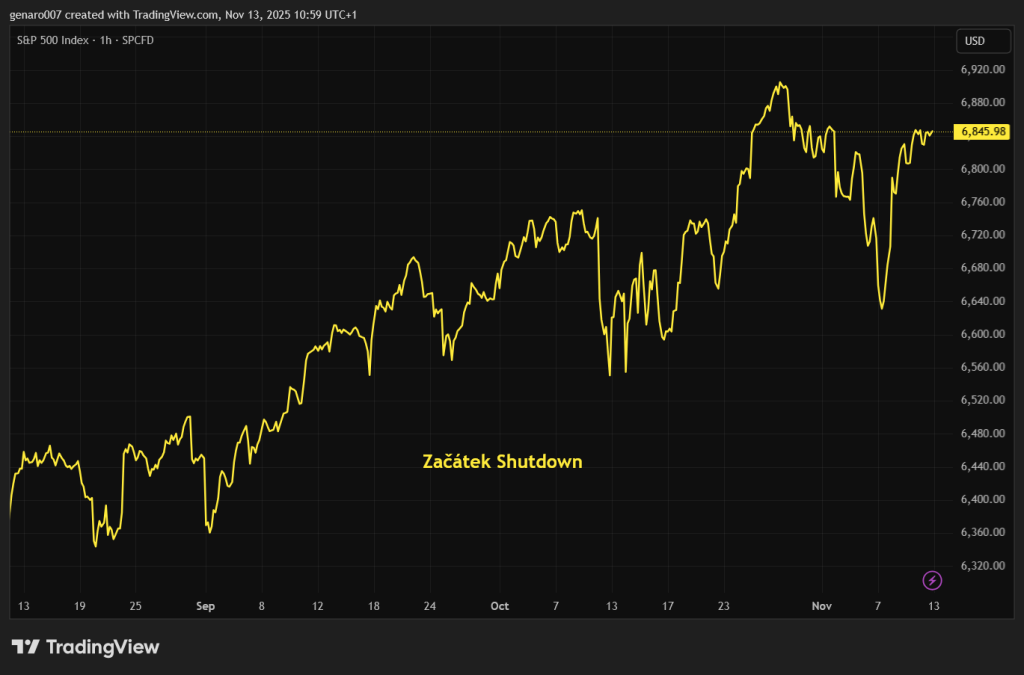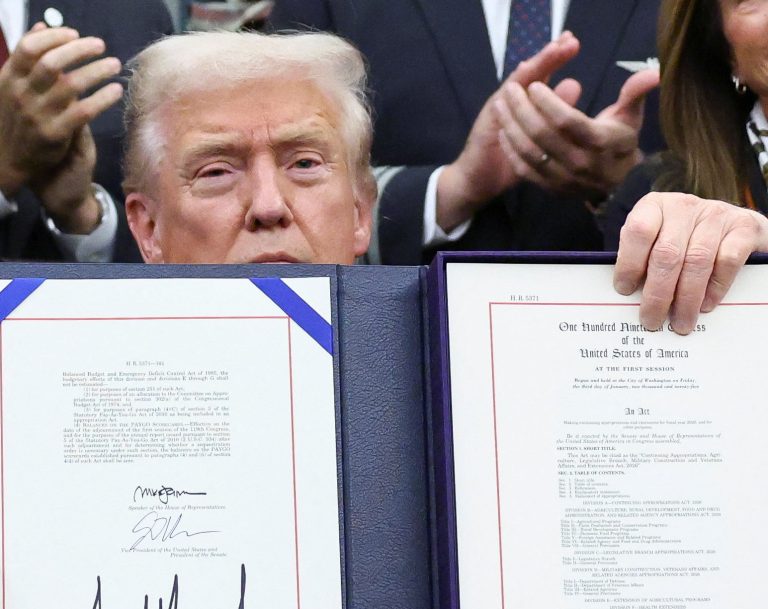The shutdown ended because a few moderate Democrats switched to the Republican side and allowed the deal to pass. Thus, the Democrats did not push through their key demands, especially on health subsidies. Trump and his Republicans scored important political points domestically.
But what is the economic dimension of the whole affair? It was the longest shutdown ever, lasting 43 days.

The reaction of the markets has been interesting. In a word, they kept rising. Before the shutdown, during the shutdown, and most likely they will continue to rise after the shutdown. The reason why they were already rising before the shutdown was announced was because the markets anticipated that it would end one day.
And the end of the shutdown has historically always been an opportunity for the stock market to rise. This hope for the end of the shutdown drove the market up for the duration of the shutdown. Moreover, many commentators have assured that the "shutdown" must last a long time for its real effects to be felt in the real economy.
But earlier this week, analysts at US banks stepped up the pressure, saying the situation was getting serious. But there is nothing stopping the markets from rising further now that the shutdown is over. Or there is a more pragmatic explanation. The markets completely ignored the whole shutdown and went about their own lives.
Trump's promise of dividends from tariffs
The US president didn't just stop at signing the government funding bill this week. Last week, the US Supreme Court cast doubt over Trump's interpretation of the state of emergency he is using to impose tariffs. His response is indeed subtle.
He promised to pay the American people a cheque of two thousand dollars as a dividend from the imposition of the tariffs. If this promise is realised, it will be very difficult for the American courts to overturn this regulation. Of course, this cheque would increase his popularity with ordinary Americans.
However, this measure has many question marks so far. Treasury Secretary Scott Bessent is considering that this dividend should only be paid to households with an income of less than 100 thousand dollars. This limit would make approximately 59 per cent of households eligible. From this, it can be calculated very roughly that this aid would cost the US Treasury USD 160 billion.
The introduction of tariffs has worked well so far. The US Treasury is $30 billion richer every month. So far, it can be said that the tariffs are working well for Donald Trump's government, because importers are playing the game and do not dare to raise prices too much.
Most of them have accepted a reduction in their margins. However, this does not change the fact that the collection of the tariffs could, according to this assumption, amount to roughly USD 360 billion. That is still very little in view of the US government deficit, which currently stands at around USD 1.8 trillion a year - roughly five times more than the tariffs alone would bring in. Moreover, once the dividend is introduced, the effect on the Treasury in terms of the deficit would be minimal. The word dividend was not chosen at random, as it implies a regular payment. Trump is therefore sending out the signal that this dividend could be paid every year, depending on the validity of the tariff measures.
For investors, this news is interesting primarily because if this dividend from the tariffs goes through, it will be very reminiscent of the aid during the covid. Back then, the government sent similar cheques to the people in three waves.
Many people have used this windfall to invest it in the financial markets or in cryptocurrencies. So one can assume that a large part of the tariff dividend would also end up in financial assets. And that would be good news for both investors and Donald Trump, because that money would help the US economy.
Reason for doubt around artificial intelligence
In its regular report, JPMorgan, the largest US investment bank, published its estimate of the cost of building AI infrastructure. This will require a total investment of around five trillion US dollars. This is an astronomical sum that even the largest technology companies will not be able to fund.
Four key companies such as Google, Amazon, Microsoft and Meta are planning to spend over USD 400 billion in 2026. That's even more than this year, when investments reached $350 billion. While these are also big investments, they won't be enough. Moreover, most of these companies that generate strong cash flow are going into debt to make these investments.
Meta took out a $27 billion private loan this year for the Hyperion data center in Louisiana. But it didn't just stick with that private loan; it issued $30 billion of its own bonds. Alphabet sold $25 billion in bonds this year. Oracle issued $18 billion of bonds for the Stargate project.
The problem is that the yields on these bonds are at record highs compared to U.S. Treasuries. This suggests that bond investors want more money now because they are starting to question whether these projects will be as profitable. Let us clarify the wording: the projects will be profitable, but the question is whether they now justify such large investments.
The report from JPMorgan thus leads to investors becoming much more sensitive to the question of the level of investment. The market mood is slowly changing. Now, it will no longer just guarantee a rise in the market share price that a firm announces massive investments in AI. Investors will look first and foremost at what projects it goes into, what the return is and, most importantly, the time to complete them. Building data centres for artificial intelligence is turning from a growth opportunity into a stress test for global credit markets.
